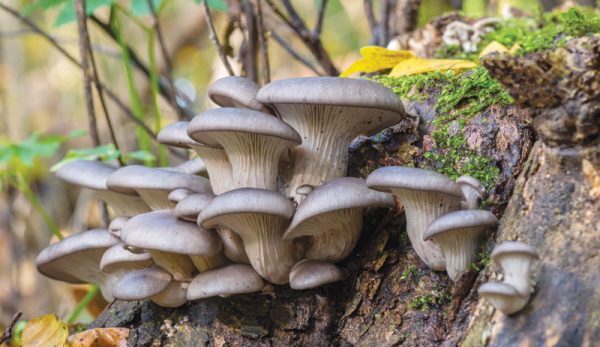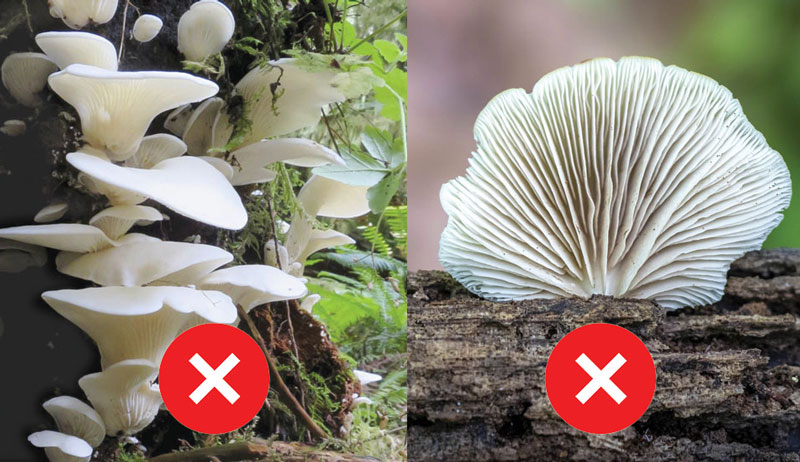
Oysters make a perfect reward for the novice forager: They’re easy to spot and identify, and they taste great, too. You may be able to find cultivated oyster mushrooms at your farmers market and get a good look at them before foraging for wild ones.
When a friend wanted me to teach him to forage, we walked across the road from his property into some woods. Less than 50 feet in, oysters greeted us on a big fallen beech tree. We grabbed double handfuls to bring home and spent more time preparing and eating them than we spent foraging.
You may not always find oysters so quickly, but they’re very common in the woods.
Most edible mushrooms grow on the ground, where they may be small, few in number, obscured by leaves and difficult to find. An oyster mushroom, on the other hand, may only be a few inches across, but oysters often grow in clumps the size of a soccer ball. And they’re up off the ground, making them among the easiest mushrooms to find.
Feasting
This one is gourmet, though unfortunately, oyster mushrooms get their name from their appearance, not their taste or texture. The dense, white flesh has a straightforward mushroom flavor, although some people detect a mild licorice scent on the fresh ones. My wife isn’t fond of the texture of mushrooms generally, but I found a cooking method that had her asking for seconds of oyster mushrooms.
Read more: Does Chicken of the Woods taste like chicken? It sure does!
Preserving
Oysters can be dried and stored in jars, but their reconstituted texture can sometimes be leathery. More reliable results can be had by cooking and then freezing them. Don’t thaw. Just throw them into a hot skillet.
Farming
Perhaps the easiest mushroom for novices to grow, they can be grown on coffee grounds (the heat has sterilized the substrate!) in a bucket in the kitchen.
Read more: You can grow your own shiitake mushrooms! Here’s how.
Look-alikes
Some Crepidotus species, such as C. applanatus, look somewhat similar but are smaller, have no stem, appear often as individuals, and have a brown spore print. Angel Wings (Pleurocybella porrigens) are thin and white, but grow on conifers. Neither look-alike should be eaten.

More Information: Know Before You Eat
What, Where & When
- decomposer on live or dead deciduous trees, standing or fallen
- clustered, overlapping rows
- white to pale lilac spore print
- throughout North America
- Oysters grow year-round, even in snowy winters. In warmer weather they grow fast, get buggy, and pass their “harvest-by date” pretty quickly. So best harvested in cooler weather.
Field ID Checklist (all must be correct)
- They project out from a deciduous tree trunk or stump.
- Caps the size of your palm to fully outspread hand, sometimes larger.
- Each individual mushroom overlaps two mushrooms below it, like shingles on a roof.
- Gills continue along the stem.
- Gills are white.
- Stubby stem doesn’t rise to meet the center of cap as with most gilled mushrooms; it comes off from the side.
- Smooth cap color ranges from bright white to gray to brown, making them stand out from the darker bark of the deciduous trees they grow on.
This excerpt from Frank Hyman’s How to Forage Mushrooms without Dying originally appeared in the September/October 2021 issue of Hobby Farms magazine.




